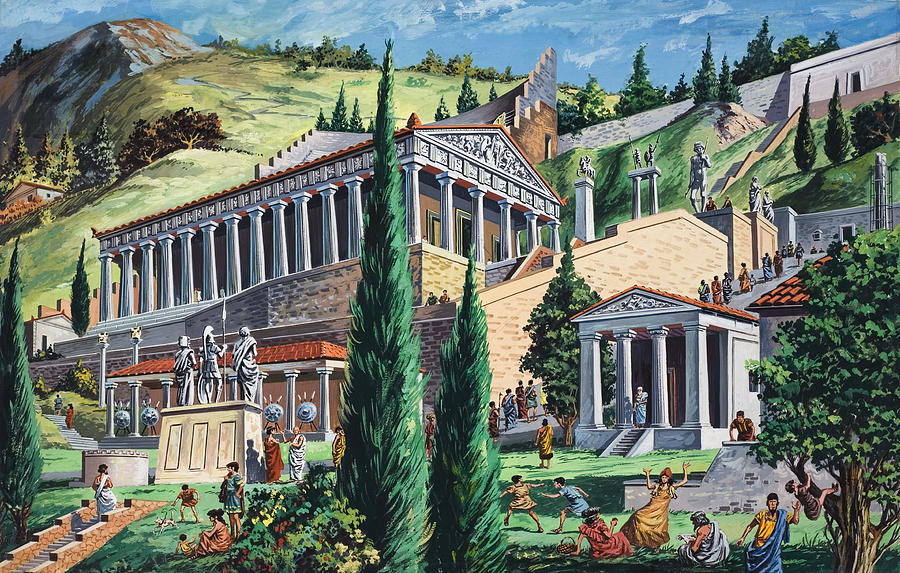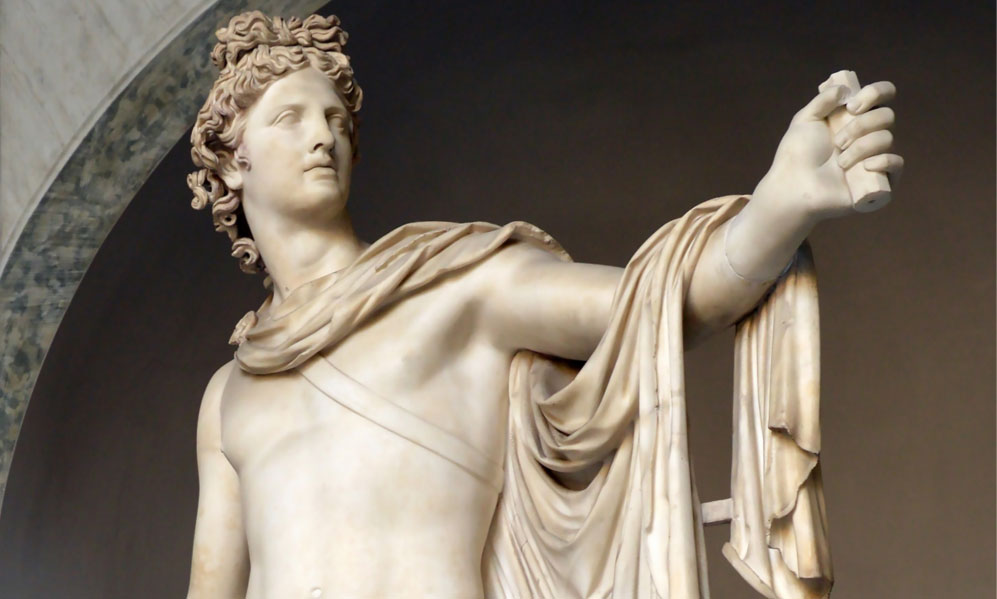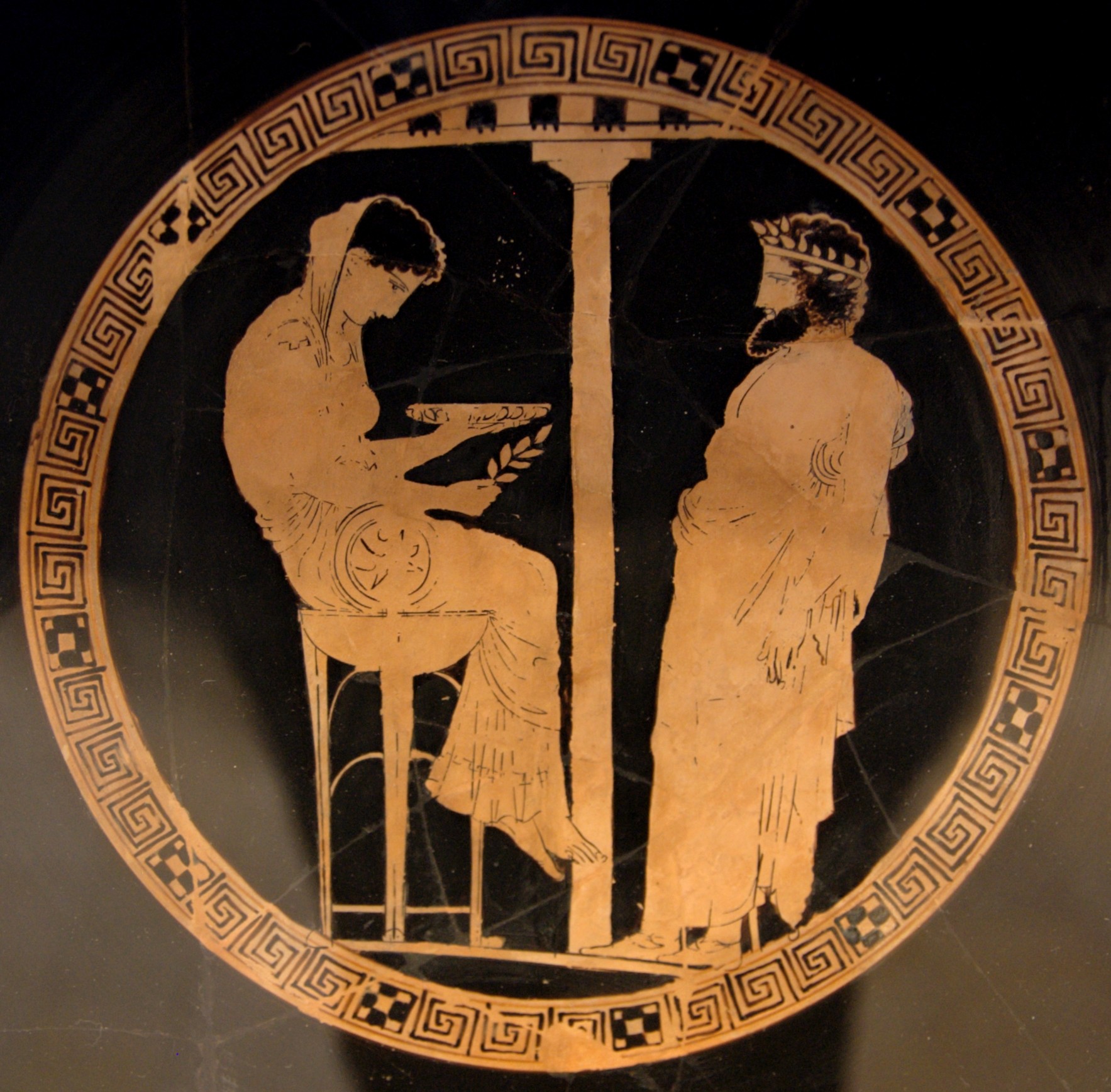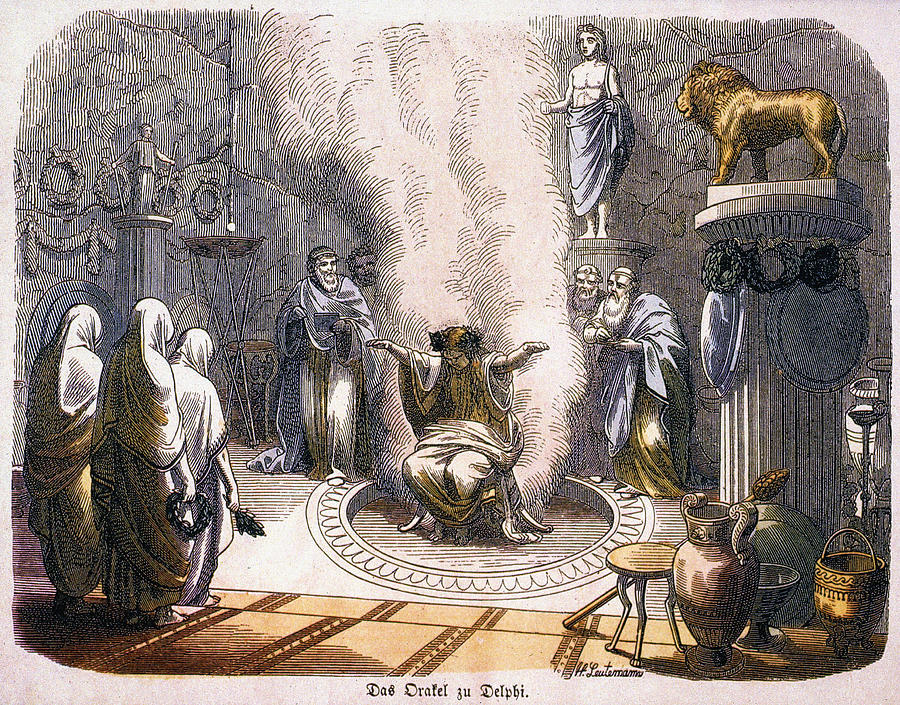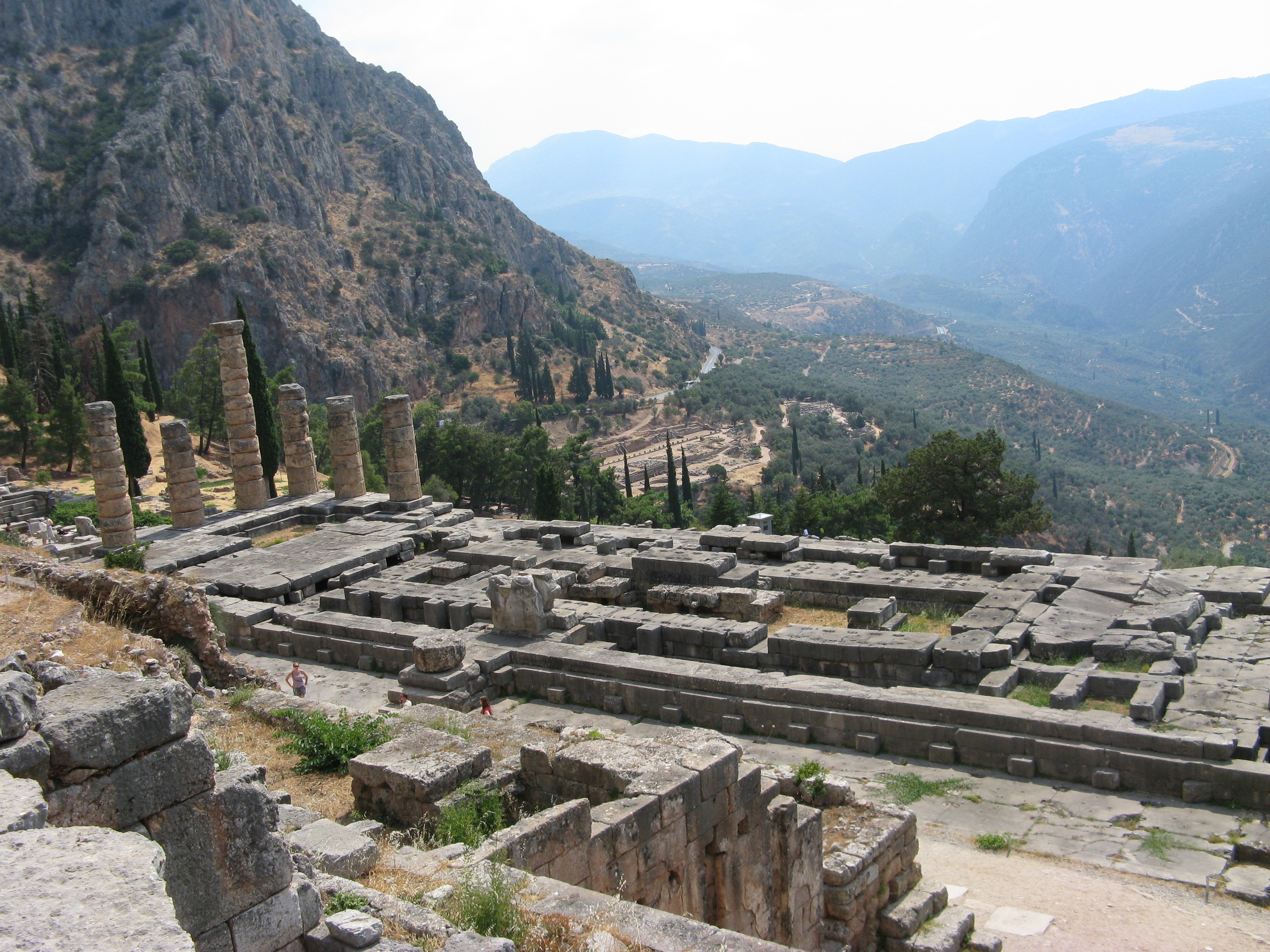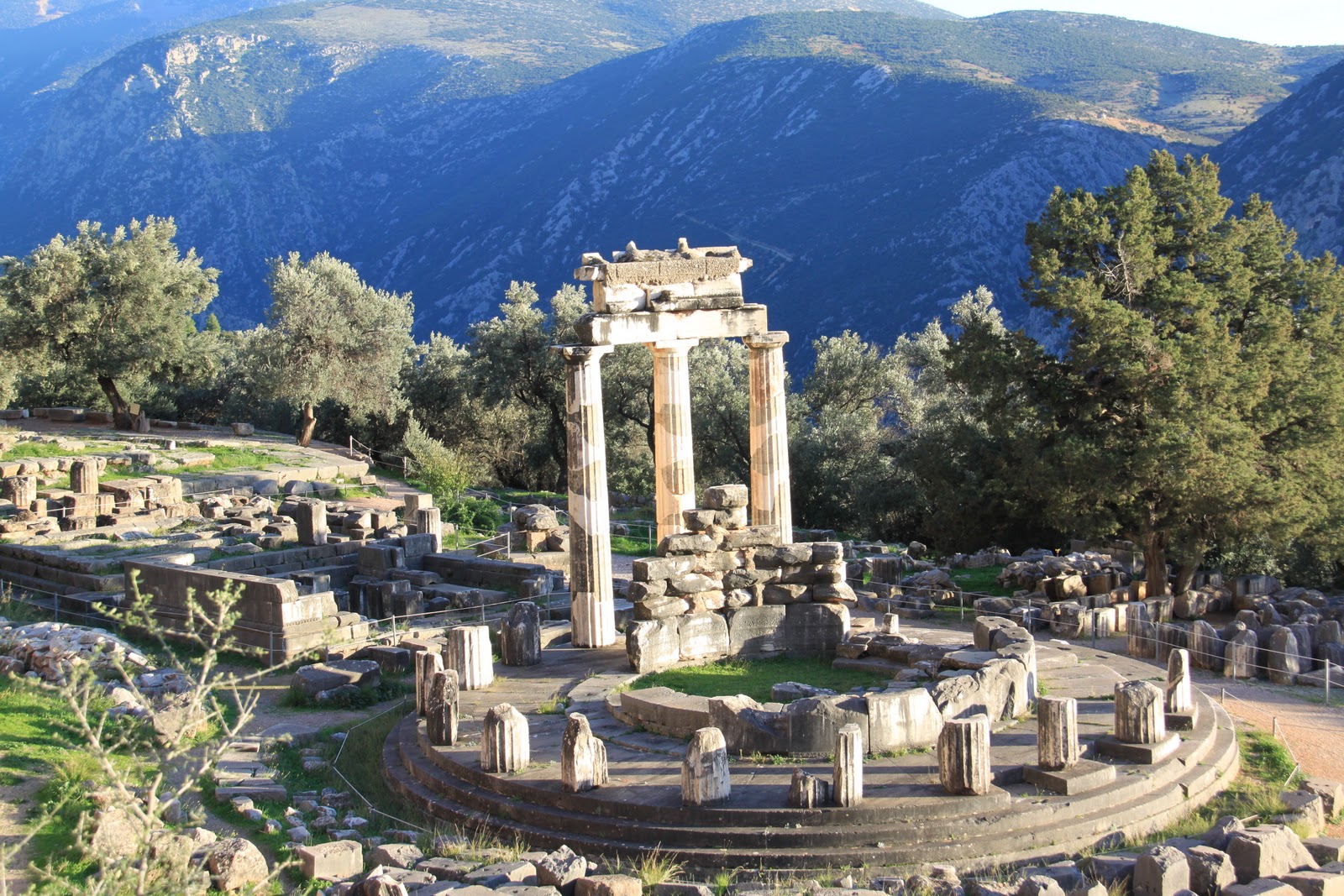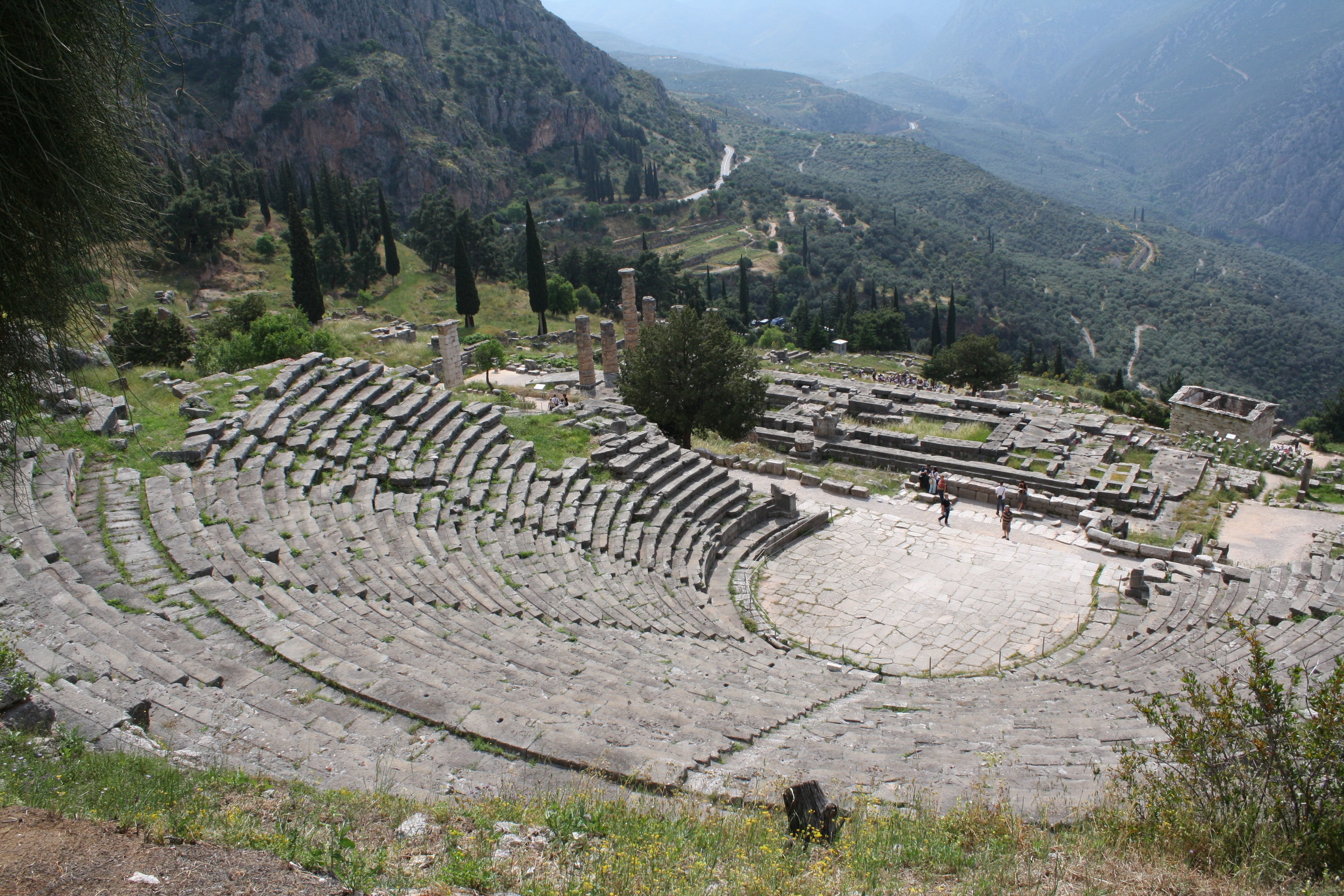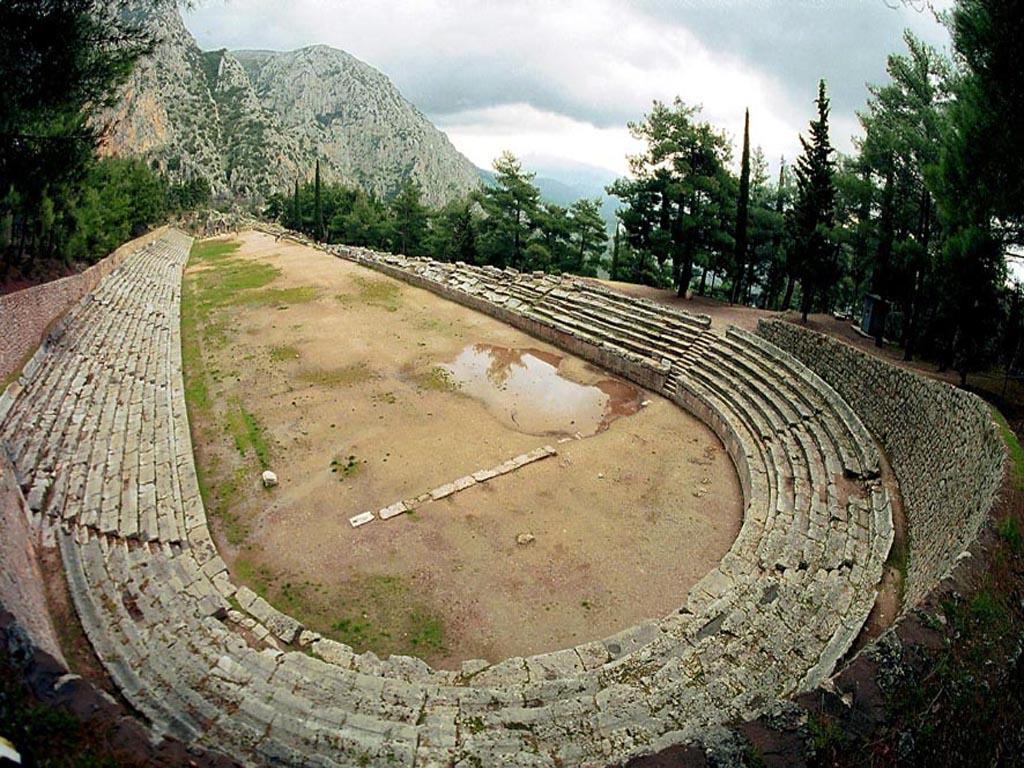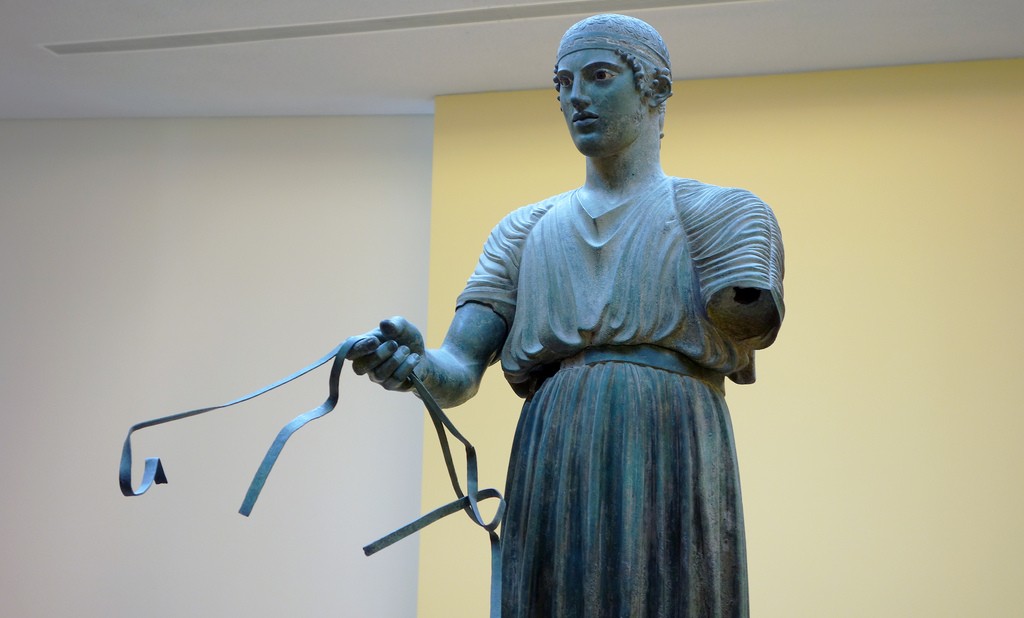The Panhellenic Sanctuary of Delphi, once regarded as the most famous oracle of ancient Greece, lies at the foot of Mt. Parnassos. Regarded as the center of the world, it is here that two eagles were sent out by Zeus from the ends of the universe to find the navel of the world. It was revered in antiquity as the omphalos of activity.
In the beginning, the site was sacred to Mother Earth and was guarded by the terrible serpent Python who was later killed by Apollo. For this reason Apollo’s sanctuary was built here by Cretans who arrived at Kirrha, the port of Delphi. Apollo took the form of a dolphin and swam out to sea to capture a group of sailors whom he appointed the first priests of his cult.
Delphi is best-known for the oracle at the sanctuary that became dedicated to Apollo. The priestess of the oracle at Delphi was known as Pythia and she was consulted before all major undertakings from wars to the founding of colonies. 500 Oracular statements survive, all ambiguously phrased eg. asked by someone if he should go to war, she said “Go, return not die in war” that can have two opposite meanings depending on where you put the comma.
The Delphic Sybil was the prophetic figure who supposedly received her information from Gaia. Paysanias claimed that she was “born between man and goddess, daughter of sea monsters and an immortal nymph.” Her powers have been linked to vapors from the Catalian Spring that surrounded her that are believed to have been hallucinogenic gases. Evidence of the presence of ethylene – a hallucinogen – was found in the temple’s local geology.
The temple of Apollo is the centerpiece of Delphi. It was bilt with donations from Greek city-states. Half a dozen of the original columns still stand at the base. There are 700 inscriptions on the exterior, mainly announcing the emancipations of slaves .
A numberof votive statues and numerous treasuries line the way to the oracle. The most impressive is the Treasury of Athens built to commemorate the Athenians’ victory at the Battle of Marathon.
The Tholos at the sanctuary of Athena Pronaia was built between 380-360 BC. Its 20 Doric columns arranged with an exterior diameter of 14.76 meters surround 10 Corinthian columns in the interior. Three of the Doric columns have been restored.
Above the temple lies a well-preserved outdoor theater with a seating capacity of 5,000 people on 33 tiers of stone seats.
Every four years, athletes from all over the Greek world competed in the Pythian Games. A stadium seating 7,000 was used for these games to celebrate Athens victory over the Phoenicians who had attacked Delphi to seize its treasures.
The Charioteer of Delphi, one of the finest examples of bronze statue, was found at Delphi at 1896. Made in 478-474BC to commemorate the victory of a chariot team at the Pythian Games, it was just part of a larger group of statues. It is now housed at the Delphi Archeological Museum.
Ask me anything
Explore related questions

